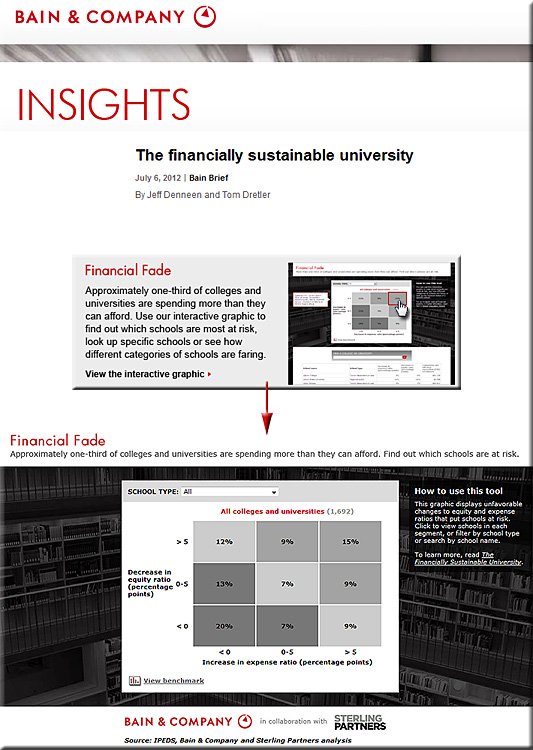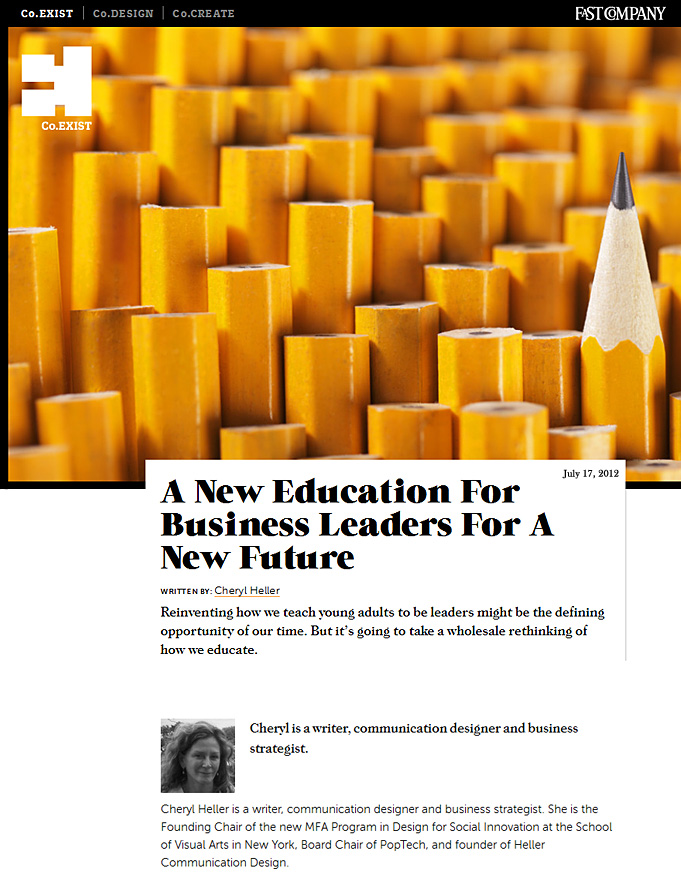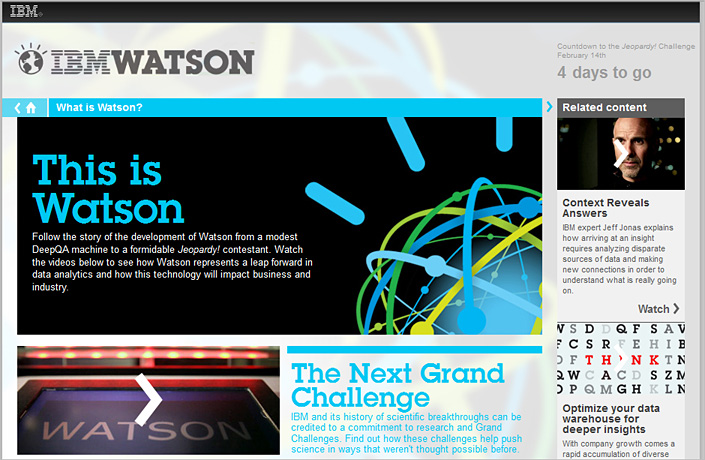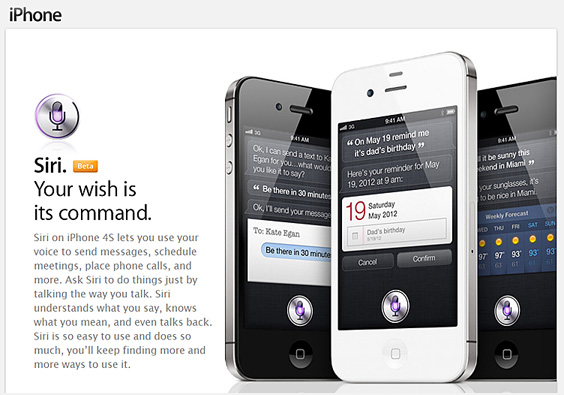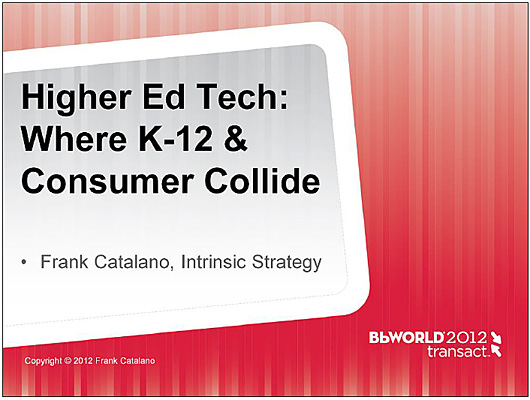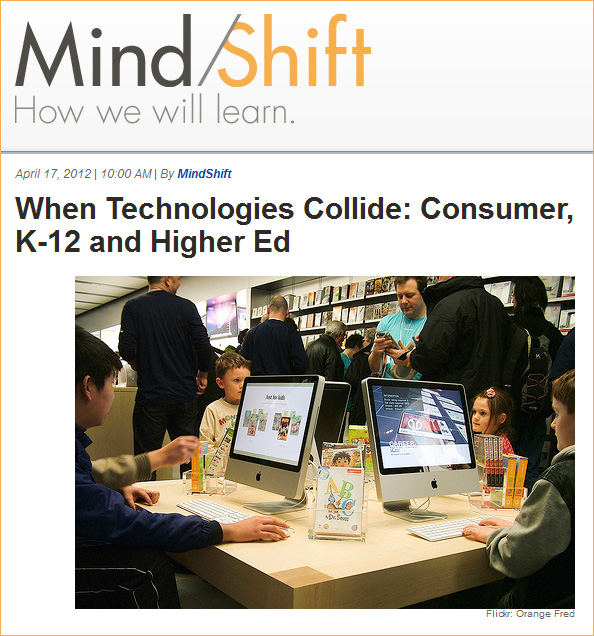Technology and the broken higher education cost model: Insights from the Delta Cost Project — from Educause by Rita Kirshstein and Jane Wellman
Excerpt:
Although U.S. higher education has faced numerous crises and dilemmas in its history, the situation in which colleges and universities find themselves at the moment is indeed different. Shrinking public subsidies coupled with historic rises in tuitions come at the same time that colleges and universities have been tasked to dramatically increase the number of individuals with postsecondary degrees. Additionally, many of these students need financial aid, putting further strains on the higher education system. The stratification between rich and poor institutions in their access to resources is also growing. These conditions make the current “cost model” under which higher education has typically operated no longer sustainable and have led to college and university leaders examining alternative ways to deliver both high-quality and affordable higher education. These alternatives incorporate technology and include access to distance-delivered education and services, a focus on learners’ outcomes rather than inputs, and technologically sophisticated buildings and classrooms.
The changes are welcome and largely overdue in much of higher education, but unless the use of technology, whether in instruction or in the operation of the institution, is guided by an understanding of higher education costs and cost structures, its use will not fix the problem of a broken higher education cost model. This problem is not confined to the way that instruction is funded and delivered; rather, it is much broader, including the costs of academic and administrative overhead and the largely unexamined “fixed costs” that drive so much of institutional spending. To implement technological innovations that can improve both efficiency and effectiveness, leaders must be guided in their efforts by a strong understanding of the impact of the innovations on both costs and revenues, as well as on learning outcomes. Without this understanding, leaders are likely to follow the usual model of innovation in higher education: implementing program add-ons, which are sometimes successful and sometimes not but which inevitably increase costs rather than replacing or reducing them and ultimately fail to take hold in ways that will leverage systemic improvements.









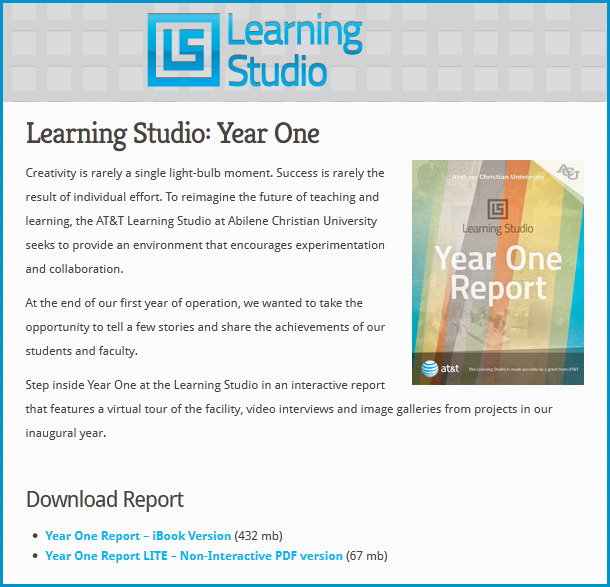
![TheSiegeOfAcademy-Sept2012 The Washington Monthly - The Magazine - The Siege of Academe [Kevin Carey]](http://danielschristian.com/learning-ecosystems/wp-content/uploads/2012/08/TheSiegeOfAcademy-Sept2012.jpg)
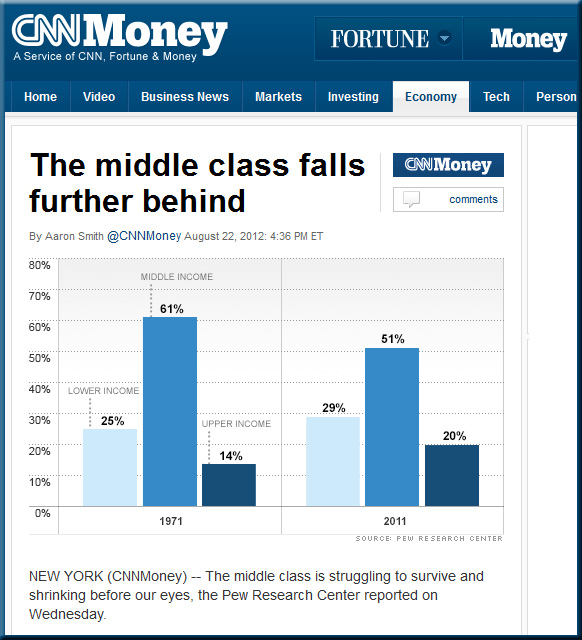

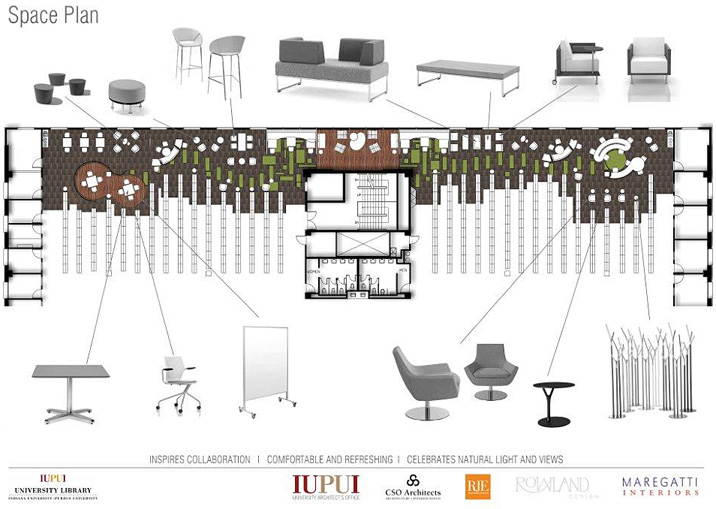
![The-Living-Class-Room-Daniel-S-Christian---July-2012 The Living [Class] Room -- by Daniel Christian -- July 2012 -- a second device used in conjunction with a Smart/Connected TV](http://danielschristian.com/learning-ecosystems/wp-content/uploads/2012/07/The-Living-Class-Room-Daniel-S-Christian-July-2012.jpg)
